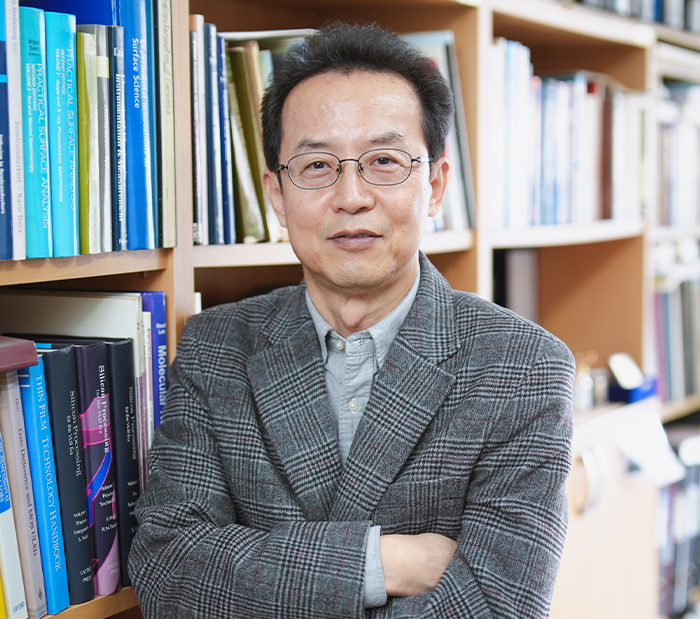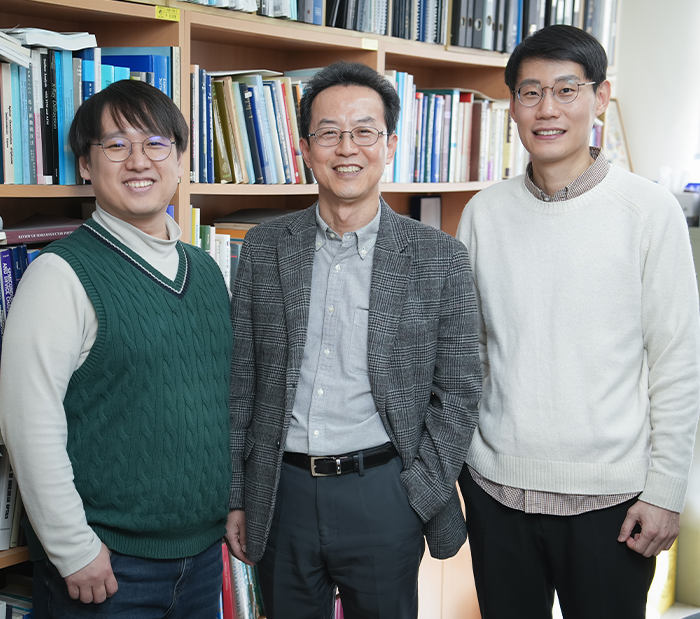Research Stories
Predicting and demonstrating of hidden metastable phase in transition metal oxide
- Theoretical prediction of hidden metastable phase in transition metal oxide - Experimental demonstration of the hidden metastable phase on the thin film surface
Advanced Materials Science and Engineering
Prof.
LEE, JAICHAN
Bongwook Chung
Prof. Jaichan Lee, a professor in the School of Advanced Materials Science and Engineering at Sungkyunkwan University, theoretically predicted the hidden metastable phase in transition metal oxides and experimentally demonstrated it on thin film surfaces.
This research predicts and demonstrates the charge-ordered phase, recognized as a fundamental stage for triggering novel functional properties such as superconductivity, colossal magnetoresistance, and multiferroicity. While charge ordering phase transitions have previously been reported in transition metal oxides with highly occupied d orbitals of transition metal cations, this study introduces a significant counterexample. Both theoretical predictions and experimental demonstration confirm the stable presence of charge-ordered phases on the surface of thin films, even within transition metal oxide have low electron occupancy in the d orbitals of transition metal cations.
This research holds substantial scientific significance as it reveals that charge ordering can potentially manifest across the complete region of 3d transition metal oxides found on the periodic table.
The material studied in this work, strontium titanate (SrTiO3), is a prototypical perovskite transition metal oxide that has been notable for significant novel functional properties, such as the first reported compound oxide superconductor. However, strontium titanate shows relatively weak electron-electron interactions and electrons-lattice coupling, owing to its lowest electron occupancy within the d orbitals of the transition metal titanium. This inherent characteristic of strontium titanate has consequently limited its application as a strongly correlated material for instigating novel functional properties.
The researchers initially used the first-principles calculations, to theoretically predict the presence of the charge-ordered metastable phase in lanthanum-doped strontium titanate. Subsequently, they experimentally fabricated lanthanum-doped strontium titanate thin films with a atomically flat surface on strontium titanate (001) substrate, and validiated the stabilization of the metastable charge-ordered phase on the surface of the thin film. The surface triggered stabilization of the charge-ordered phase is both experimentally verified and theoretically predicted by first-principles calculations.
Prof. Jaichan Lee explained that the research approach in this study to stabilize metastable phase using a thin film surface is expected to be a fundamental platform to investigate significant novel functional properties induced from charge ordering, such as superconductivity, colossal magnetoresistance, and multiferroicity.
This work was supported by the National Research Foundation of Korea and KISTI Supercomputing Center. The research was published in the international multidisciplinary science journal Nature Communications on 8th February.
※Journal: Nature Communications
※Title: Surface triggered stabilization of metastable charge-ordered phase in SrTiO3
※DOI: 10.1038/s41467-024-45342-8
※Author list
- Corresponding author: Prof. Jaichan Lee, Prof. Chang-Beom Eom
- Co-first author: Prof. Kitae Eom, Bongwook Chung
- Co-author: Sehoon Oh, Hua Zhou, Jinsol Seo, Sang Ho Oh, Jinhyuk Jang, Si-Young Choi, Minsu Choi, Ilwan Seo, Yun Sang Lee, Youngmin Kim, Hyungwoo Lee, Jung-Woo Lee, Kyoungjun Lee, Mark Rzchowski
▲The verification of the surface triggered charge-ordered phase on the lanthanum-doped strontium titanate thin film surface.


